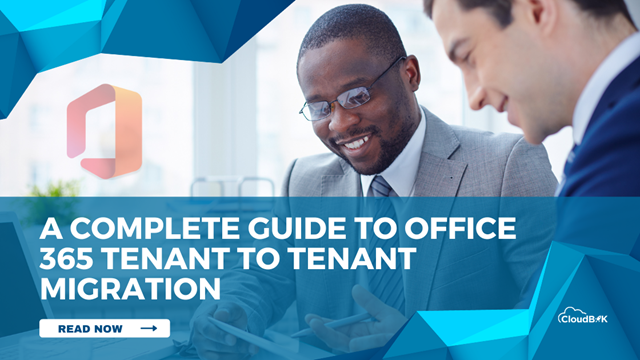
In today’s fast-paced business world, companies often need to move from one Office 365 tenant to another. This usually happens during mergers, acquisitions, or rebranding. While Microsoft offers basic tools for migration, many businesses prefer using third-party email migration solutions to make the process easier and avoid common problems. In this guide, we will explain the Office 365 tenant to tenant migration process and show how using third-party tools can make the migration smoother and more efficient.
What is Office 365 Tenant to Tenant Migration?
Tenant to tenant migration in Office 365 means moving your data, emails, OneDrive files, and other resources from one Office 365 account (tenant) to another. This is usually needed when companies change ownership, merge, or want to simplify their IT setup by merging multiple tenants.
Common Challenges in Tenant to Tenant Migration
- Downtime: Migration can cause a temporary pause in services, which can affect your business.
- Data Loss: Ensuring that no data is lost or damaged during the migration is very important.
- Security: Keeping your data secure during the migration process is a top priority.
- User Experience: Making sure the transition is smooth for your employees without interrupting their work is key to success.
Why Use Third-Party Email Migration Solutions?
Third-party email migration solutions offer extra features that Microsoft’s built-in tools may not provide. Here’s why these tools can make a big difference in your migration:
- Faster Migration
Third-party tools are designed to move data faster. They can manage bandwidth better, which reduces the time needed for migration and helps minimise downtime.
- Reduced Downtime
Some third-party tools allow for real-time migrations or phased migrations. This means your employees can keep working without being interrupted.
- Better Error Management
Migration can have unexpected issues. Third-party tools often handle errors better, resolving problems quickly and keeping the process on track.
- Handling Complex Migrations
If your business has a lot of data or a complicated structure, third-party tools can help by allowing customised data transfers, making the process more flexible.
- Enhanced Security
Third-party solutions use encryption to keep your data safe during the entire migration, preventing any potential breaches.
Popular Third-Party Migration Tools for Office 365
Here are some of the most popular third-party tools that make Office 365 tenant to tenant migration easier:
- CloudBik
- Supports mailbox, documents, and OneDrive, SharePoint and Teams migrations.
- Automated migration with minimal effort.
- Cloudiway
- Helps migrate emails, OneDrive, and SharePoint.
- Provides a single dashboard to monitor progress.
- Quest On Demand Migration
- Handles migration of emails, OneDrive, and Teams data.
- Designed for smooth transitions with little impact on users.
Step-by-Step Guide for Office 365 Tenant to Tenant Migration
- Plan Ahead
- Identify all the data you want to migrate (emails, OneDrive, SharePoint, etc.).
- Ensure that both the source and destination tenants have the necessary licenses and permissions.
- Select the Right Migration Tool
- Based on your needs, pick a third-party tool that suits your business requirements.
- Look for features like scheduling, real-time monitoring, and error management.
- Prepare Your Tenants
- Clean up unwanted data before migrating to make the process faster.
- Update DNS settings in the destination tenant to ensure email functionality post-migration.
- Start Migration
- Use the chosen tool to begin transferring data like emails, OneDrive, and SharePoint files.
- Always start with a test migration for a small group to ensure the process works smoothly.
- Check Post-Migration
- Once the migration is complete, verify that all data has been correctly transferred.
- Reconfigure email settings and ensure the right permissions are set in the destination tenant.
- Support and Training
- Provide necessary training for your employees to help them adjust to the new tenant.
- Offer ongoing support in case any issues come up after the migration.
Best Practices for Office 365 Tenant to Tenant Migration
- Start with a Pilot Migration: Test the migration with a small group of users before moving everyone.
- Keep Employees Informed: Let your employees know about the migration schedule, potential downtimes, and any actions they need to take.
- Monitor the Process: Use the reporting features of your third-party tool to keep track of the migration and resolve any issues promptly.
Conclusion
Migrating from one Office 365 tenant to another can be complex, especially for large businesses with a lot of data. However, third-party email migration solutions can simplify the process by making it faster, safer, and less disruptive to your operations. By selecting the right tools and following the best practices mentioned in this guide, you can ensure a smooth migration with minimal downtime.
Read More: Google Workspace to Office 365 Migration











